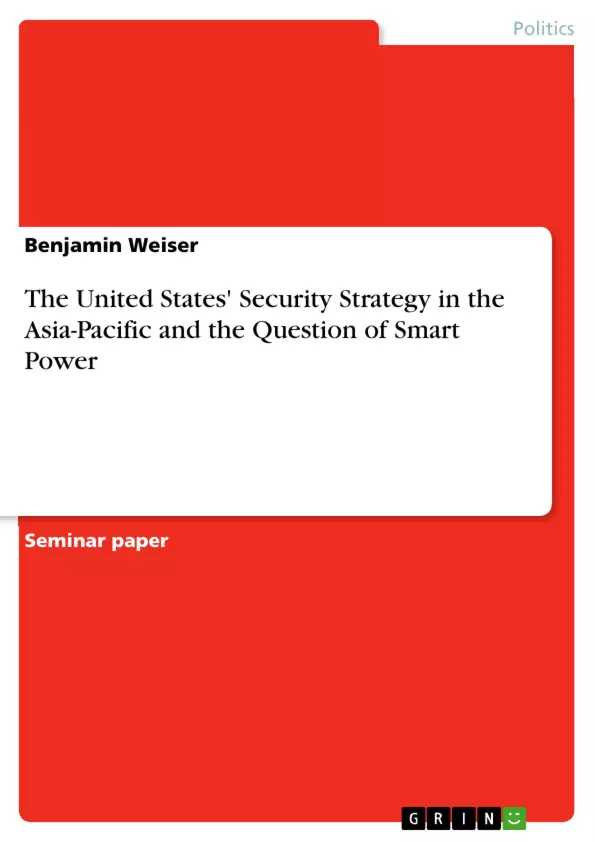Much has been said and written in the last years concerning the „Pivot to Asia”, meaning that the United States’ (US) strategy agenda has been moving away from a post-Second World War European to a recent Asian focus. In maritime patterns this change in US interests is described by the term „Pacific century”, which is said to be going to replace the Atlantic one. With the fall of the Soviet Union, US strategy towards the Asia-Pacific has been undergoing a significant transition. As Warren Christopher, Secretary of State under the first Clinton presidency, said in Hanoi in 1995: „In the old days we wanted to make Asia safe for democracy, these days we want to make it safe for American exports.”.
This quote fits perfectly in the 1990ies neoliberal zeitgeist of the successful presidential campaign „The economy, stupid” of Bill Clinton, who wanted to reinvent US predominance based on an economist point of view, rather than continuing with expensive military power politics. But it would fall too short if one wants to understand the post-Cold War US’ engagement in the Asia-Pacific only by explaining the economic and trade policies of the United States. Both security and economy are at the core of US foreign policy strategy, since these two objectives being more and more intertwined in terms of globalization, digitization and other megatrends.
Classical and “old-fashioned” hard power approaches are therefore questioned, as they sometimes fail to explain the rise of messy multilateralism and a total heterogeneous security landscape in this region of interest. But to what extent the US strategy in the Asia-Pacific really is a sign of a more cooperative approach based on Neoliberal-Institutionalist3 thought rather than referring to Neorealist hard power politics? And which role the US seeks to have in this complex setting?
Inhaltsverzeichnis (Table of Contents)
- Introduction
- Theory and Methodology
- Analysis
- Conclusion
- Notifications
- Literature
- Declaration of Authorship
Zielsetzung und Themenschwerpunkte (Objectives and Key Themes)
This paper analyzes the United States' (US) security strategy in the Asia-Pacific, focusing on the evolving relationship between hard and soft power approaches. It examines the historical development of US engagement in the region, from the early 19th century to the present day, paying particular attention to the post-Cold War era. The author utilizes theoretical frameworks from both Neorealism and Neoliberal Institutionalism to understand the complexities of US security strategy in the Asia-Pacific.
- The historical evolution of US strategy in the Asia-Pacific
- The concept of smart power and its relevance to US strategy
- The interplay of hard and soft power in US foreign policy
- The role of international institutions and multilateralism in the Asia-Pacific
- The impact of globalization and digitization on US security strategy
Zusammenfassung der Kapitel (Chapter Summaries)
- Introduction: The introduction outlines the historical context of US engagement in the Asia-Pacific, emphasizing the region's growing strategic importance for the United States. It explores the evolving role of the US in the region, from the early days of trade agreements to its post-World War II dominance.
- Theory and Methodology: This section delves into the theoretical frameworks employed in the paper, emphasizing the limitations of applying a single theory to understand the complexity of US security strategy. It introduces the concepts of hard, soft, and smart power and explains their relevance to the US engagement in the Asia-Pacific. The author also provides a brief overview of Neorealism and Neoliberal Institutionalism, highlighting their key assumptions and strengths.
Schlüsselwörter (Keywords)
Key terms and concepts explored in this paper include US security strategy, Asia-Pacific, smart power, hard power, soft power, Neorealism, Neoliberal Institutionalism, globalization, digitization, multilateralism, and the historical evolution of US foreign policy.
- Citation du texte
- B.A. Benjamin Weiser (Auteur), 2017, The United States' Security Strategy in the Asia-Pacific and the Question of Smart Power, Munich, GRIN Verlag, https://www.grin.com/document/353756



